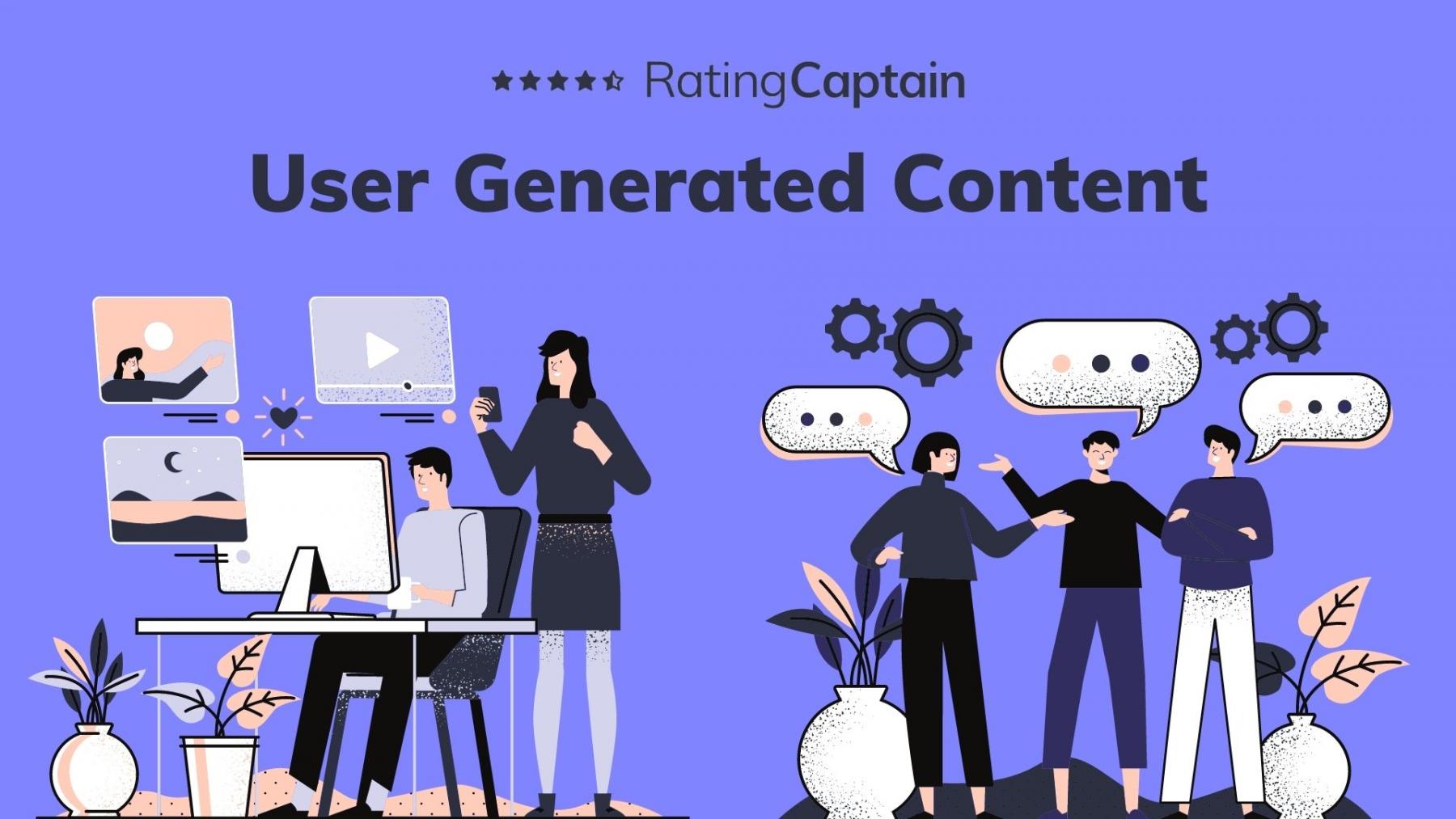

User Generated Content, or how to encourage users to promote the brand?

Table of contents
Today, the average inhabitant of the planet spends about 2.5 hours a day on social media platforms, watching YouTube videos, liking posts on social media, and writing tweets. Even more interesting are the statistics regarding the use of TikTok. On average, people visit this social network about 10 times within 24 hours, resulting in spending up to 60 minutes there daily.
Meanwhile, marketers have taken advantage of this excellent opportunity and have started intensively conducting online advertising. Over the past decades, websites and social media profiles have been flooded with advertisements. Today, after entering a website, there are offers targeted at the user and related to various topics displayed in different sizes, simply screaming, "click on me".
This aggressive policy of marketers and their banner ads has led to the emergence of ad blindness among people.

What is ad blindness?
Ad blindness or banner blindness is a phenomenon that has arisen as a result of becoming accustomed to the same type of advertisement. For example, advertising any product or service on flashing banners, in SMS messages, and via email is already outdated and therefore brings no more than 40% of the expected conversion.
The so-called aging of certain types of ads is caused by several factors::
- technological progress, which has led to a huge number of communication channels with customers changing in just about 50 years. People have moved from reading newspapers about 100 years ago to watching television, and today everyone spends time surfing the internet.
- spamming with certain types of ads. This process causes some users to stop opening the messages sent to them at all. This can happen with any type of advertisement.
- innovations in media - the aging of old-style ads. For example, a few years ago, SMS advertising was still relevant, but recently a new type of advertising has been invented - not through SMS messages, but, for example, directly in Messenger.
It is important to note that recipients remember only 10% of what they hear, 20% of what they read, and as much as 70% of what they see. Therefore, it is important to use advertising in a way that is visible to the user.
How to engage customers?
After all that has been said above, let's find out how we can reach customers. Specifically, what to do to make advertising not only visible but also memorable.
User Generated Content comes to the rescue, which in the age of aggressive advertising is one of the best ways to communicate with customers.
What is User Generated Content?
The definition of User Generated Content (or UGC) states that it is a type of marketing content - text, video, photos, reviews, etc., created by users and used by a company in its advertising campaign. UGC has become particularly widespread in the 21st century, in the era of internet marketing and social media.
One of the most popular soft drink brands is "Coca-Cola". In 2011, the corporation created a new project called "Find your Coca-Cola", which involved building an innovative brand image through content created by ordinary users. The company produced cans with 150 different names. The marketing promotion caused a storm of emotions among consumers, millions of people advertised the product for free, created and shared photos with their name on the can.
Types of User Generated Content?
The variety of ideas generated by users tends towards infinity. Nowadays, everyone has everything they need to create any type of content: a camera, a microphone, video editing software, or simply a phone, without which 93% of the population of Poland cannot imagine their lives.
But the most basic types of User Generated Content campaign content are::
- blog comments
- comments or posts on Facebook
- reviews
- user-generated videos
- user-generated blog posts
- forums
- podcasts
Remember that you cannot force internet users to record videos or leave comments, but you can encourage your audience to collaborate with your business every day, increasing brand awareness. The more trust you gain from customers, the more likely it is that fans of your product will promote it online for free. For example, by using a unique hashtag related to your brand name.

Advantages of UGC?
Brands present on the internet should use User Generated Content as a key component of communication because they do not always have direct contact with customers. What is so valuable about content shared by users and why should your company be interested in it?
# Trust of consumers in your brand
UGC is content that has been created from the perspective of the customer, which means that it will also serve as a guide for other consumers because their vision of the product or service is exactly the same. Therefore, about 90% of people unconsciously trust businesses that use authentic content. I think it is logical to believe in user reviews from people like you who use or have already used a specific company's product.
# High-quality content marketing
Since consumers themselves create videos and write texts, in other words, promote our product, we can analyze our activities, watch user-generated content, and look at everything through the eyes of the consumer. This way, we will understand what needs to be changed to move in the right direction. It is through such observation and, of course, UGC that we will be able to improve the sales of our product or service and, most importantly, improve its quality.
# Possibility of SMO updates
Social Media Optimization (SMO) - optimizing a website to work with social networks. This method will help attract users of Facebook, Instagram, Pinterest, etc. to the online resources of your company. According to statistics from a BrightLocal survey, 84% of users trust online reviews. If the product is good, the likelihood of its purchase increases. Give your customers the opportunity to leave product reviews and comments through social media.
# Organic positioning of SEO attributes
One of the important processes of promotion in e-commerce is preparing external links and using keywords. By using UGC, you can simplify this process. For example, if you insert a link to an additional product or service at the bottom of a review, it will look more natural, and the likelihood of it being clicked will increase. Additionally, with User Generated Content, you can organize internal links by sending users materials related to the comment or review, as well as product listings from the online store.
# Manage purchasing decisions
Almost 80% of people claim that UGC has a significant impact on their purchasing decisions. For example, by using stories on Instagram, you can bring the consumer much closer to making a purchase. Even remotely, they will be able to check the product by reading comments on the website and seeing recommendations from other buyers. This is how you can influence the buyer's choice.
# UGC simply pays off
The cost of a short advertisement can reach up to $100,000. Not every entrepreneur has such large amounts in their account. In this case, UGC is an excellent solution for small, medium, or startup companies because user-generated content is a free "pleasure for entrepreneurs". You just need to establish the direction of your brand's online activities in the context of UGC and encourage users to create content.
You can collaborate with an influencer who will become an ambassador for your products in a UGC campaign. But first, analyze whether their social media followers are your target audience. If so, order a native (non-intrusive) advertisement for your brand's product. If everything is done correctly, from choosing the target audience to working with the blogger and potential customers, you will be able to conduct a short advertising campaign that is no worse than a professional 30-second video.
Today, User Generated Content is a great opportunity for businesses of all sizes to create valuable content at low costs. Remember that customers will always be able to point you in the direction of developing your business. After all, you create a product not for yourself, but primarily for the consumer.
Please rate this article
Try our new
Local SEO tool
Manage and track visibility of your
Google Business Profiles

